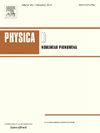Adaptive dynamic social networks using an agent-based model to study the role of social awareness in infectious disease spread
IF 2.7
3区 数学
Q1 MATHEMATICS, APPLIED
引用次数: 0
Abstract
The synergy between the spread of infectious diseases, individual behavior, and group dynamics is widely recognized by epidemiologists and researchers. Our pioneering methodology introduces a model based on agents embedded within adaptive temporal networks, providing a nuanced portrayal of daily interactions through an agent-based paradigm. Each agent encapsulates the interactions of individuals, with external stimuli and environmental cues influencing their behavior. Comprising three intertwined elements — individual behavior, social dynamics, and epidemiological factors — the model has been validated against real-world influenza outbreaks, demonstrating superior performance compared to traditional methodologies. Our framework exhibits extensive versatility and applicability by encapsulating individual-level dynamics through elementary rules and simulating complex social behaviors such as social consciousness.
求助全文
约1分钟内获得全文
求助全文
来源期刊

Physica D: Nonlinear Phenomena
物理-物理:数学物理
CiteScore
7.30
自引率
7.50%
发文量
213
审稿时长
65 days
期刊介绍:
Physica D (Nonlinear Phenomena) publishes research and review articles reporting on experimental and theoretical works, techniques and ideas that advance the understanding of nonlinear phenomena. Topics encompass wave motion in physical, chemical and biological systems; physical or biological phenomena governed by nonlinear field equations, including hydrodynamics and turbulence; pattern formation and cooperative phenomena; instability, bifurcations, chaos, and space-time disorder; integrable/Hamiltonian systems; asymptotic analysis and, more generally, mathematical methods for nonlinear systems.
 求助内容:
求助内容: 应助结果提醒方式:
应助结果提醒方式:


